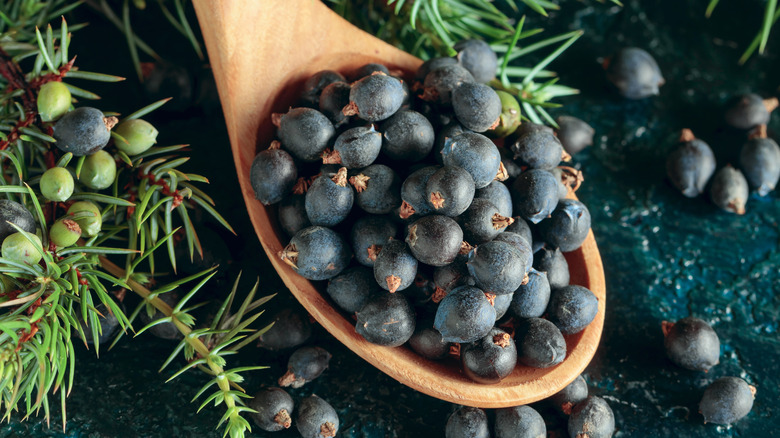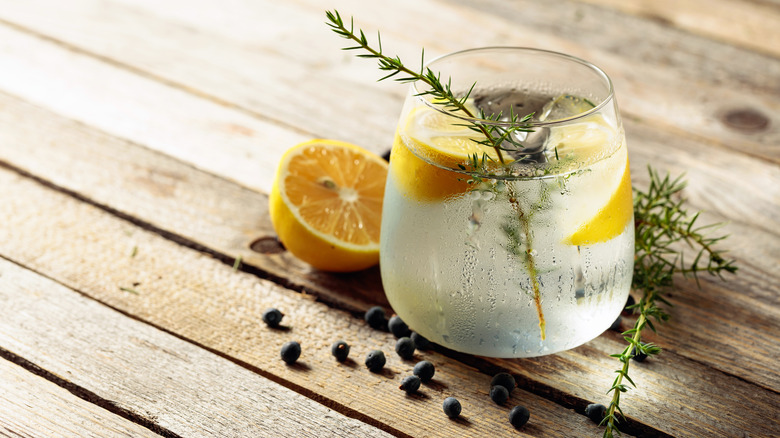Juniper Is Gin's Main Flavor, But What Does It Actually Taste Like?
Gin is one of the more controversial liquors in the world of spirits. It inspires passionate appreciation in some people and a deep hatred in others. While it has been described as tasting like everything from paint thinner to Christmas trees, many find its crisp, resinous quality quite pleasant and perfect for certain cocktail pairings.
The primary flavor found in gin is juniper, a botanical with a uniquely fresh and herbaceous taste. A botanical is any flavoring agent that comes from a plant, and in the case of gin, it is the berries of the juniper plant that get used. Unlike the berries we pick up from the grocery store, juniper berries aren't sweet at all — they're actually known for their astringency. In addition to this bitterness, they also carry notes of wood, citrus, and pine needles. The berries impart similar flavors to gin, along with a sharp and slightly sweet aroma.
What flavors to pair with gin
While gin has a clean, crisp taste, it is far from a neutral spirit. As such, when using it in a drink, it is important to know which flavors to pair with gin and which to avoid. Acidic fruits like lemon, lime, and even pineapple paired with a touch of a sweet, simple syrup work to balance the bitterness of the liquor. But if you prefer to highlight the juniper, cucumber or ginger are great options that help draw out the berry's vegetal and herbaceous notes.
While what is considered a lousy pairing is largely subjective, there are a few gin combinations you will almost certainly want to avoid. The dry, green flavors of gin will clash quite noticeably with cloyingly sweet ingredients that lack any acidity. This means it is largely a bad idea to use it when spiking your hot cocoa or blending a boozy milkshake. Trust us on this one — stick to tried and true formulas, like the classic G&T.

